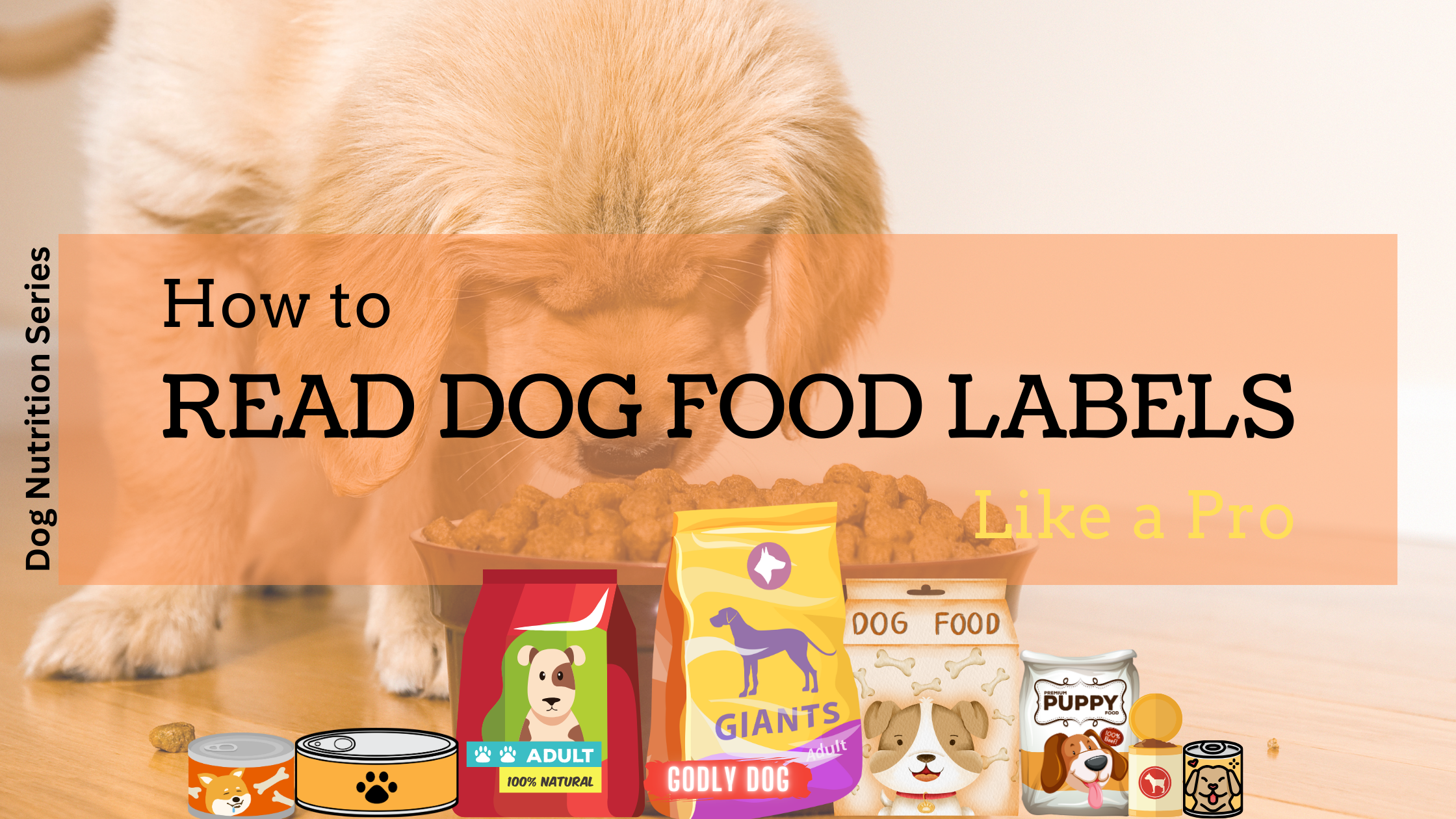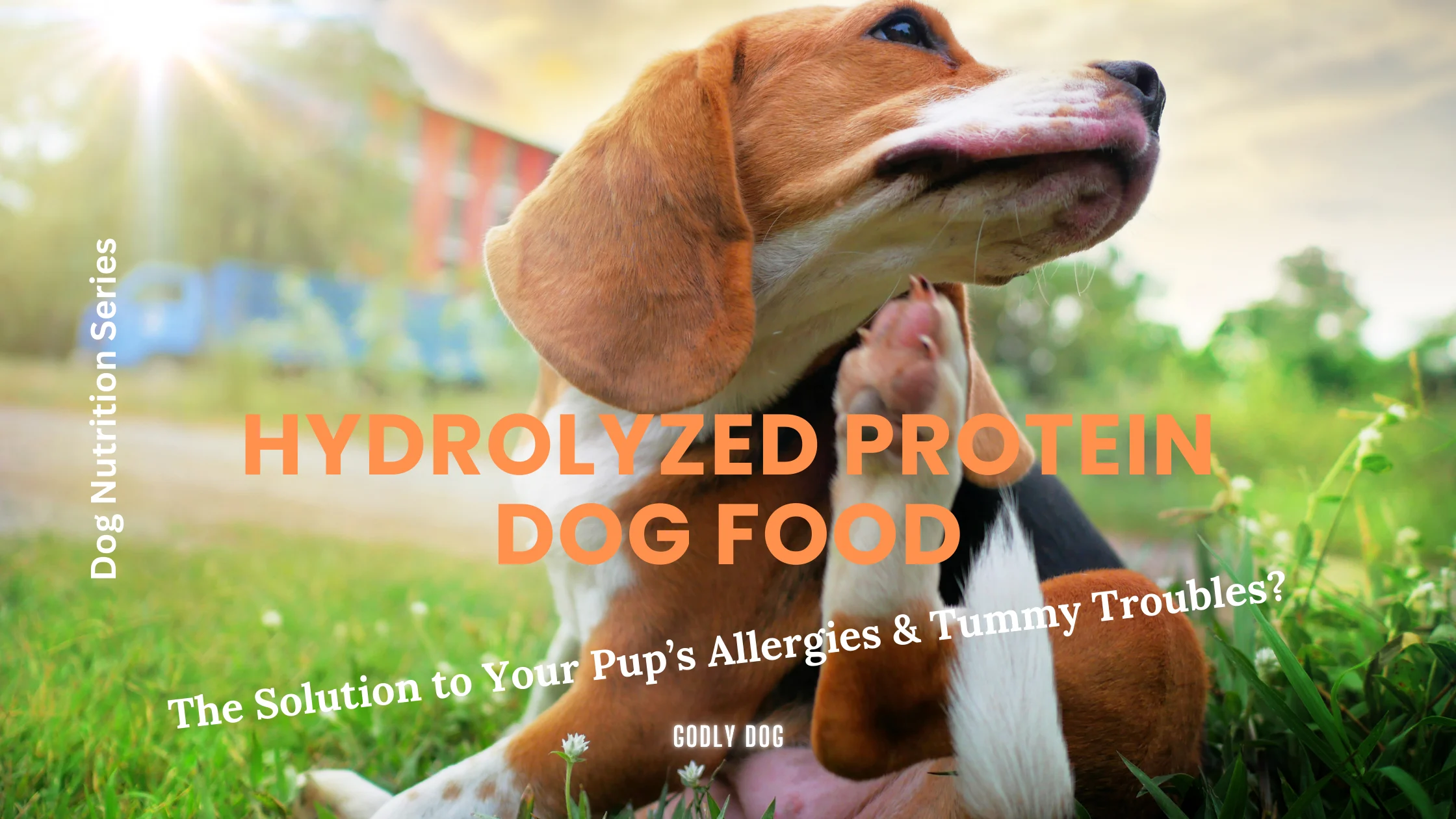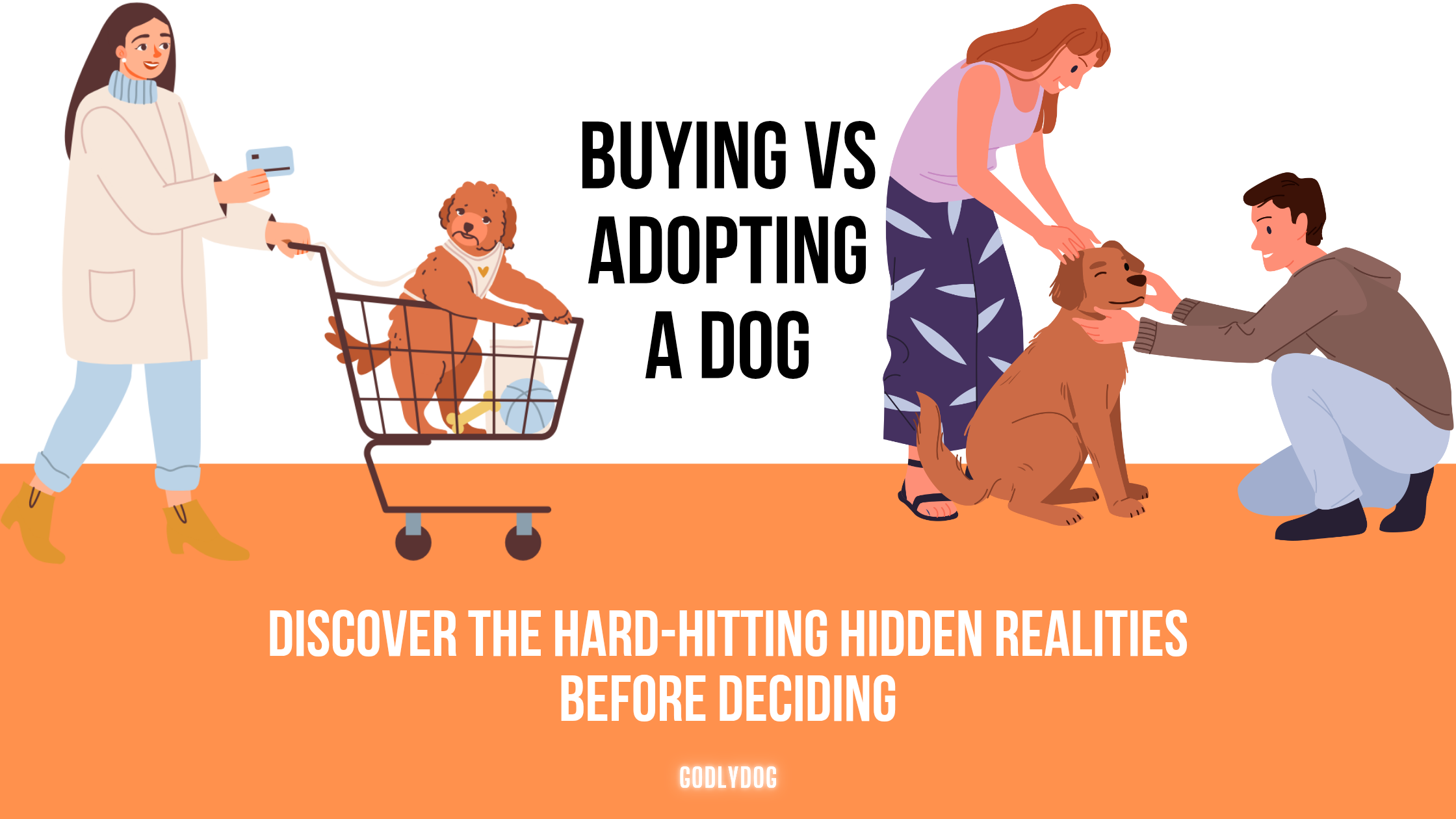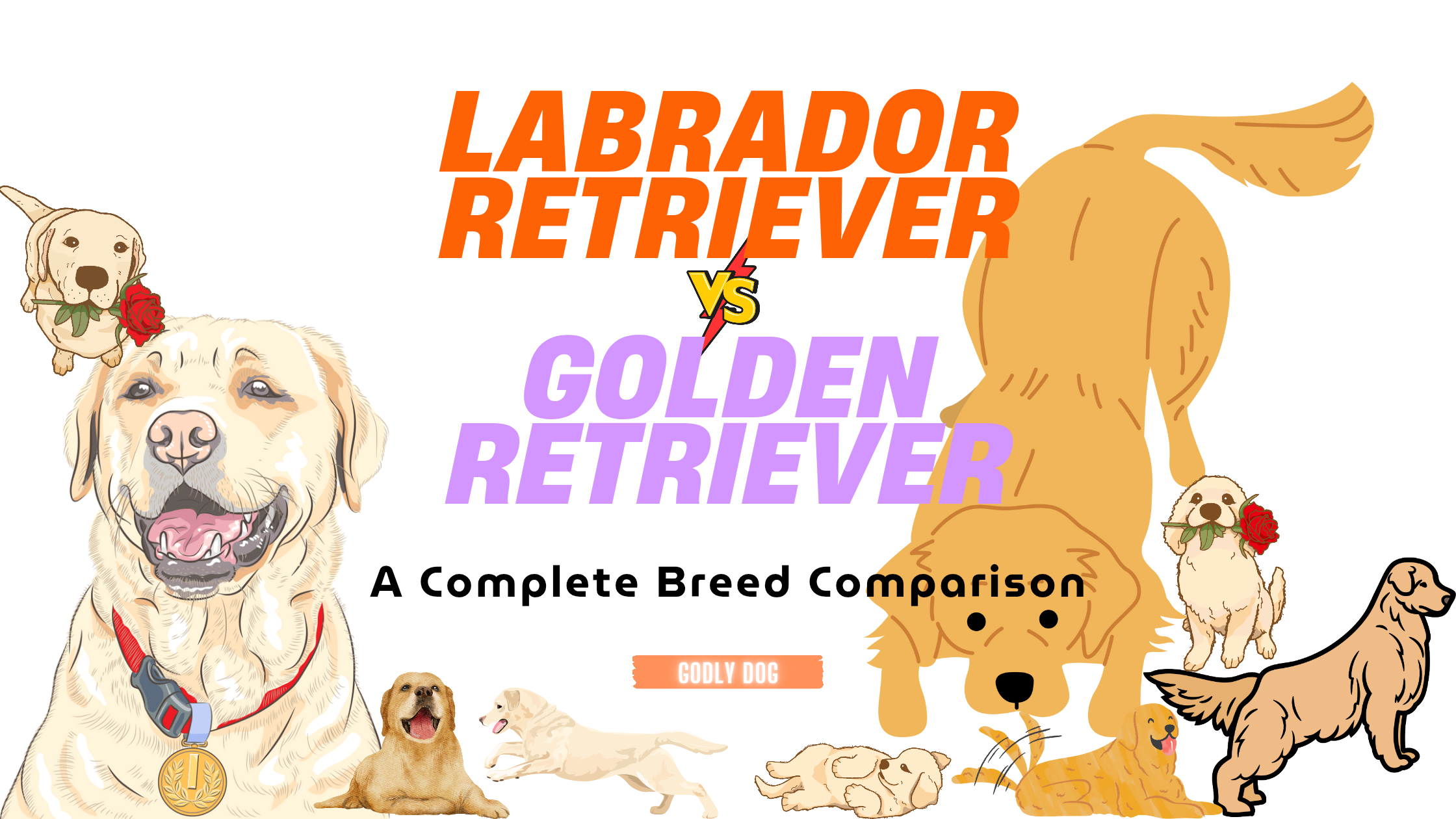How to Read Dog Food Labels Like a Pro

At a store to buy your pup food, while reading the dog food label have you ever found yourself staring at the bag and feeling like you were trying to decipher an ancient scroll? You’re not alone. Pet food companies love using fancy marketing terms, confusing ingredient lists, and vague nutritional claims to make their products sound way healthier than they really are.
If you’ve ever wondered:
- ◆ “What’s actually in my dog’s food?”
- ◆ “Is this premium kibble really premium, or is it just good branding?”
- ◆ “Why does ‘Beef Flavor’ dog food barely contain any beef?”
…then congratulations! You’re about to become a dog food detective!
Why Reading Dog Food Labels is a Superpower
The pet food industry is a multi-billion-dollar business, and not all brands have your dog’s best interests at heart. Some are loaded with:
- ◆ Cheap fillers (corn, wheat, soy—basically junk food for dogs)
- ◆ Low-quality meat by-products (“meat meal” isn’t always what it seems)
- ◆ Artificial preservatives & colors (BHA, BHT, and ethoxyquin—yikes)
- ◆ Misleading buzzwords (“Natural,” “Holistic,” “Super Premium”—what do they even mean?!)
But don’t worry—we’re about to break it all down. By the end of this guide, you’ll be able to:
- ◆ Spot marketing tricks a mile away
- ◆ Choose the best food based on real ingredients—not flashy labels
- ◆ Feel confident knowing your pup is eating quality food
Grab your magnifying glass, and let’s crack the how to read dog food labels code!
Reading The Dog Food Label: What’s On It and Why It Matters
Dog food labels aren’t just a bunch of random words thrown together to make a bag of kibble look fancy. Every single detail on that label is regulated (to some extent) and tells you something about what’s inside. But pet food companies also use sneaky tricks to make their food sound healthier than it really is.
Let’s break down the key sections of a dog food label so you know exactly what to look for:
1. Product Name – The First Clue to What’s Inside
The name of the product can immediately tell you how much of a specific ingredient is actually in the food—if you know how to decode it. The Association of American Feed Control Officials (AAFCO) has strict rules about how ingredients must be named:
The 95% Rule
If the label says “Chicken Dog Food” or “Beef for Dogs”, at least 95% of the product (excluding water) must be that ingredient. This is the gold standard—high meat content, minimal fillers.
The 25% Rule (Dinner Rule)
If you see words like “Chicken Dinner,” “Beef Entrée,” or “Turkey Platter,” the named ingredient only has to make up 25% of the food (or 10% if water is included). So, a “Chicken & Sweet Potato Dinner” could be mostly rice, corn, or other fillers, with just a small amount of actual chicken and sweet potato.
The “With” Rule
If a food is labeled “Dog Food with Salmon,” it only needs to contain at least 3% salmon. Yep, just 3%. That’s like saying a sprinkle of cheese makes a salad a “Cheese Salad.”
The Flavor Rule
If a bag says “Beef Flavor Dog Food,” there may be only trace amounts of beef—just enough for a lab test to detect it. The word “flavor” means they might just be using beef broth, beef fat, or artificial beef flavoring.
Pro Tip: If you want real meat, look for labels following the 95% Rule. If you see words like “dinner” or “with,” flip the bag over and check the ingredient list before assuming it’s a high-protein food.
2. Guaranteed Analysis – The Nutritional Breakdown
Every dog food label includes a Guaranteed Analysis (GA), which tells you the minimum and maximum percentages of key nutrients in the food. Here’s what to focus on:
- ◆ Crude Protein: Essential for muscle growth and maintenance. Look for at least 18% for adult dogs and 22% or more for puppies.
- ◆ Crude Fat: Dogs need healthy fats for energy and a shiny coat. Look for around 10-15% for adult dogs and a bit more for active or working breeds.
- ◆ Crude Fiber: Helps with digestion. Most good dog foods have 3-5% fiber—too much can cause loose stools.
- ◆ Moisture Content: Wet food has more water (usually 75-80%), while kibble has about 10% moisture.
Important: The Guaranteed Analysis doesn’t tell you the quality of ingredients—just the quantity. A food with 28% protein might get most of that from low-quality meat by-products instead of real, nutritious meat. That’s why checking the ingredient list is critical.
3. Ingredients List – The Most Important Section
This is where the truth is. The ingredient list must be written in descending order by weight, meaning the first few ingredients make up most of the food.
Here’s what you want to see at the top of the list:
- ◆ Whole named meats (Chicken, Beef, Salmon, Turkey)
- ◆ High-quality meat meals (Chicken Meal, Lamb Meal—these are concentrated protein sources)
- ◆ Whole vegetables & fruits (Sweet potatoes, carrots, blueberries for added nutrients)
- ◆ Healthy fats (Salmon oil, flaxseed, chicken fat for omega-3s and omega-6s)
Here’s what you should avoid:
- ◆ Unnamed meat sources (“Meat meal,” “Animal by-product meal”—what animal? Who knows?!)
- ◆ Cheap fillers (Corn, wheat, soy—used to bulk up food without adding real nutrition)
- ◆ Artificial preservatives & colors (BHA, BHT, ethoxyquin—potentially harmful chemicals)
- ◆ Sugars & sweeteners (Corn syrup, propylene glycol—dogs don’t need sugar, cancer needs sugar!)
Quick Tip: If the first ingredient is corn, wheat, or anything other than real meat, put the bag back on the shelf and walk away.
4. Nutritional Adequacy Statement – Is It Really “Complete and Balanced”?
You’ve probably seen phrases like “Complete and Balanced Nutrition” or “100% Complete for All Life Stages” on dog food packaging. But what do these claims actually mean?
According to AAFCO, for a dog food to be labeled “complete and balanced,” it must meet specific nutritional standards based on one of two methods:
- ◆ Laboratory Formulation – The food is designed to meet AAFCO’s minimum nutrient requirements on paper but has never been tested on real dogs.
- ◆ Feeding Trials – The food has been tested on real dogs over time to confirm that it provides proper nutrition. This is the gold standard!
How to spot quality food: Look for a Nutritional Adequacy Statement that says something like:
- ◆ “Animal feeding tests using AAFCO procedures substantiate that [Brand Name] provides complete and balanced nutrition for [specific life stage].”
- ◆ “Formulated to meet the nutritional levels established by AAFCO Dog Food Nutrient Profiles.”
Pro Tip: If a food doesn’t have an AAFCO statement, it’s probably not nutritionally complete. You might need to supplement it with other food sources.
5. Dog Food Feeding Guidelines – How Much Should You Actually Feed?
Every dog food label includes feeding recommendations, usually based on weight. But here’s the thing: these are just guidelines, not strict rules.
It Depends On Factors like:
- ◆ Breed & Size – Large breeds need more calories per day than small breeds.
- ◆ Activity Level – A couch potato dog burns fewer calories than a hyperactive pup.
- ◆ Metabolism & Age – Puppies and senior dogs have different nutritional needs.
Example Feeding Chart (Dry Kibble)
| Dog Weight | Daily Food Amount |
|---|---|
| 10 lbs | ¾ to 1 cup |
| 25 lbs | 1½ to 2 cups |
| 50 lbs | 2½ to 3 cups |
| 100 lbs | 4½ to 5 cups |
Reality Check:
These charts assume an average activity level—if your dog is super active, they’ll need more.
Feeding too much? You might end up with a chunky pup.
Feeding too little? Your dog may not get the nutrients they need.
Final Tip: Always monitor your dog’s weight, body condition, and energy levels—and adjust portions accordingly! If in doubt, consult your vet.
6. Marketing Buzzwords – What Do They Actually Mean?
Dog food brands love throwing fancy words on their packaging. But what do they really mean? Let’s bust some myths!
“Natural” vs. “Organic” – Are They the Same?
Nope! While “natural” means the food doesn’t contain artificial preservatives, colors, or flavors, it doesn’t mean the ingredients were organically sourced.
Organic dog food must meet USDA organic standards, meaning:
- ◆ No artificial additives
- ◆ No synthetic pesticides
- ◆ No growth hormones or antibiotics in meat sources
Is organic dog food better? Not always! It’s usually more expensive, but high-quality non-organic foods can be just as nutritious.
“Grain-Free” – Should You Avoid Grains?
The grain-free trend has been huge, but is it necessary? Not for most dogs!
FDA Warning: Some grain-free diets have been linked to dilated cardiomyopathy (DCM), a heart disease in dogs. The concern is that grain-free formulas often replace grains with peas, lentils, and potatoes, which may affect heart health.
When is grain-free a good choice?
- ◆ If your dog has a diagnosed grain allergy (which is rare).
- ◆ If they have chronic digestive issues and grains trigger symptoms.
If your dog tolerates grains well, there’s no need to go grain-free. Whole grains like brown rice and oatmeal can actually be great sources of fiber and nutrients.
“New Proteins” – Do Dogs Need Exotic Meats?
Some brands market “exotic” meats like bison, kangaroo, rabbit, and venison as superior. But do dogs really need them?
When are exotic proteins useful?
- ◆ If your dog has food allergies to common proteins like chicken or beef.
- ◆ If you’re doing an elimination diet to find the cause of allergies.
When are they unnecessary?
- ◆ If your dog has no known allergies, these proteins don’t offer extra benefits over regular meats.
Bottom Line: If your dog thrives on chicken or beef, there’s no need to switch to something exotic.
“Human-Grade” – Is It Better for Dogs?
Some brands claim their food is “human-grade,” but does that make it healthier?
What “Human-Grade” Means:
- ◆ All ingredients are safe for human consumption.
- ◆ The food is made in a facility approved for human food production.
What It Doesn’t Mean:
- ◆ It’s not necessarily more nutritious than high-quality pet food.
- ◆ It doesn’t guarantee better ingredient sourcing.
- ◆ It’s often way more expensive without a clear benefit.
Should you buy human-grade dog food? It depends! If the ingredients and formulation are top-notch, great! But don’t assume it’s automatically better just because it says “human-grade.”
7. So How to Read Dog Food Labels to Compare and Choose the Best One?
With so many dog food brands out there, choosing the right one can feel overwhelming. But don’t worry—I’ve got a foolproof way to decode labels and pick the best food for your pup!
Step 1: Check the First 5 Ingredients
The first few ingredients make up the bulk of the food. You want high-quality protein sources at the top!
Good ingredients:
- ◆ Named meat sources (chicken, beef, salmon, lamb, turkey, etc.)
- ◆ Whole food sources (sweet potatoes, brown rice, blueberries, spinach, etc.)
- ◆ Healthy fats (salmon oil, flaxseed, chicken fat)
Red flags to avoid:
- ◆ Unnamed meats (e.g., “meat meal,” “animal by-products”)
- ◆ Fillers (e.g., corn, wheat, soy—unless your dog tolerates them well)
- ◆ Artificial preservatives & colors (BHA, BHT, ethoxyquin, artificial dyes)
Quick tip: If the first ingredient is a meat “meal” (like “chicken meal”), that’s fine! It’s a concentrated source of protein, but it should be from a named source (e.g., “chicken meal,” not “meat meal”).
Step 2: Look at the Guaranteed Analysis
This section tells you the nutrient breakdown of the food. Here’s what to check:
- ◆ Protein: Aim for at least 22% for puppies and 18% for adult dogs. Higher is usually better!
- ◆ Fat: Healthy fat is essential—look for at least 8-15% (higher for active dogs).
- ◆ Fiber: 3-6% is ideal for good digestion.
Example Comparison:
| Brand | Protein (%) | Fat (%) | Fiber (%) | Artificial Additives? |
|---|---|---|---|---|
| Brand A | 28% | 14% | 4% | No |
| Brand B | 21% | 10% | 6% | Yes |
| Brand C | 32% | 18% | 3% | No |
Best Choice? Brand A or C, since they have higher protein, balanced fat, and no artificial junk.
Step 3: Evaluate the Price vs. Quality
More expensive doesn’t always mean better! Some premium brands use top-notch ingredients, while others just charge more for fancy packaging.
Questions to ask yourself:
- ◆ Am I paying for real quality ingredients or just marketing hype?
- ◆ Does this food match my dog’s specific needs? (e.g., allergies, activity level)
- ◆ Can I afford this food long-term?
Pro Tip: If you’re on a budget, look for mid-tier brands with high-quality ingredients. Some great cost-effective options exist that don’t break the bank!
Step 4: Read Reviews & Get Expert Advice
Before switching foods, do a little research:
- ◆ Check online reviews – Are there consistent complaints about digestive issues or recalls?
- ◆ Ask your vet – They can recommend brands that fit your dog’s health needs.
- ◆ Join dog owner communities – Other pet parents can share their experiences with different brands.
Remember: Every dog is unique. What works for one pup may not work for another. Always monitor how your dog looks, feels, and acts on a new diet!
Final Thoughts – The Best Dog Food Is…

There’s no single “best” dog food—but there is a best food for YOUR dog!
How to find it?
- ◆ Look beyond the marketing. Read Dog Food Labels carefully to check ingredients, AAFCO statements, and quality.
- ◆ Prioritize whole, named proteins. Avoid vague meat sources and fillers.
- ◆ Balance cost and nutrition. Find the best option that fits your budget.
- ◆ Listen to your dog! If they’re thriving—shiny coat, good energy, healthy weight—you’re doing it right.
Imagine if your dog could read their own food label—would they still eat it? Be their advocate. After all, their food bowl is their health in a nutshell—so make every bite count. Read dog food labels thoroughly, choose wisely, and watch them go crazy with zoomies!

Srijana, founder of Godly Dog, brings 12+ years of experience caring for dogs, including her 6 fur kids: a Labrador, 2 Spitz, and 3 Indie rescues. She has studied natural dog nutrition and behavior to better understand and care for them. A passionate advocate for strays and a dedicated volunteer, she believes dogs embody godliness, inspiring unconditional love and selflessness. Through Godly Dog, she shares practical advice to ensure every dog gets the love, care, and respect they deserve.



